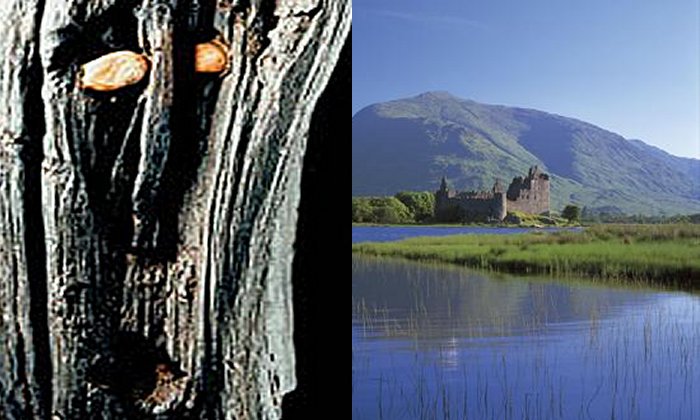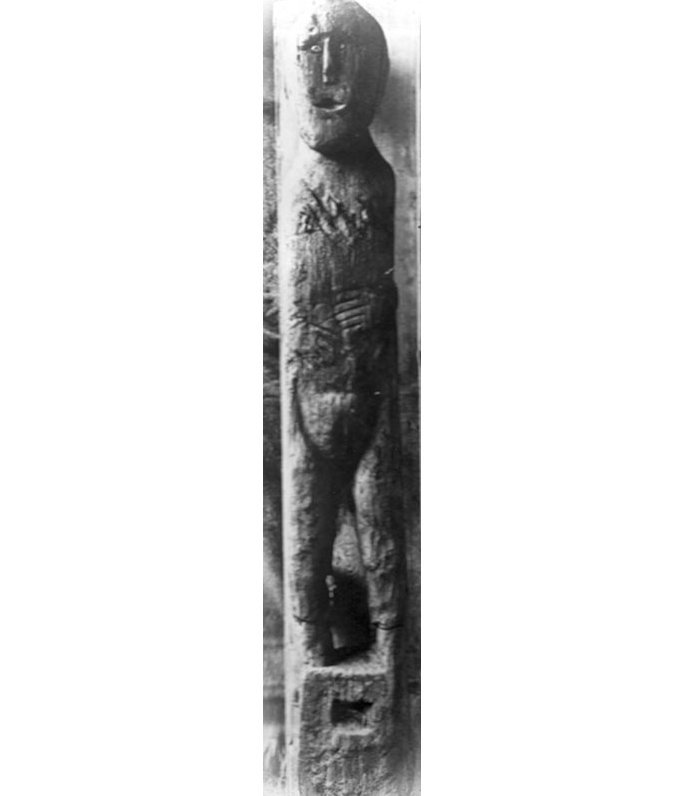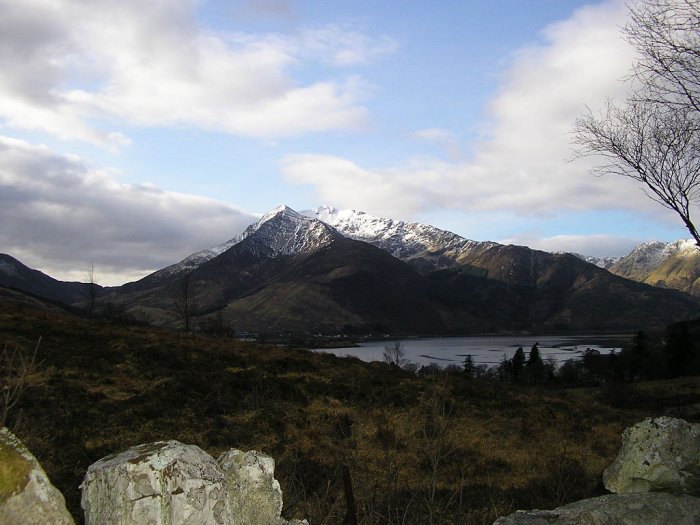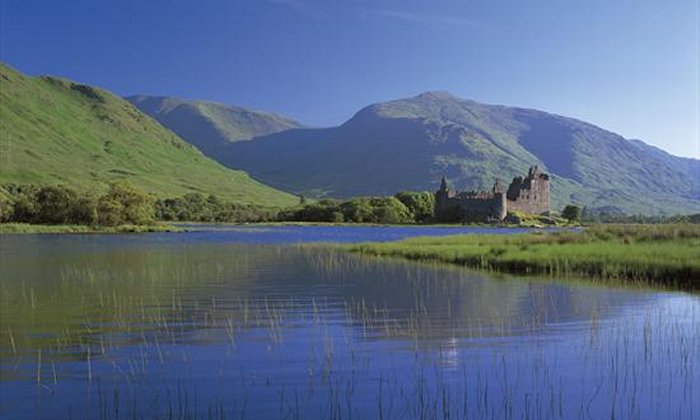Scotland’s Mysterious Ballachulish Figure Could Be Cailleach Bheithir – Ancient Hag Goddess Of Winds And Storms
Ellen Lloyd - AncientPages.com - Located at the National Museum of Scotland, the mysterious Ballachulish figure is a roughly life-sized figure of a female carved from a single piece of alder, with pebbles for eyes. At first glance the artifact does not appear to be very impressive, but the figure is over 2,500-year-old and could offer valuable insights into Scottish Iron-Age beliefs.
The Ballachulish figure is just as mysterious as fascinating. Is the enigmatic Ballachulish figure a representation of an Iron-Age goddess worshipped in the surrounding region? Was she the ancient hag goddess of winds and storm - Cailleach Bheithir?
The Discovery Of The Ballachulish Figure
The Ballachulish figure as discovered in during building work in November 1880, under deep peat. It was lying face down on the gravel of an old raised beach, around 120 meters from the shore of Loch Leven on the west coast of Scotland.
The height of the tall stick-like figure in dark alder wood, when found, was around 145 centimeters (just under 5 feet).
Today, the Ballachulish Figure looks very different from when it was found. There were no scientific techniques to preserve waterlogged wood in the 1880s, and although people wanted to keep the figure wet, they could not find a container large enough, so they decided to let it dry out.
It was taken to the (then-named) National Museum of Antiquities of Scotland in Edinburgh over two weeks after its discovery, and during the journey it broke at the legs. When it dried out, it warped and cracked, and a large piece broke off.
The old age of the figure makes it difficult to see all carvings, but it is definitely a depiction of a female.
Ballachulish figure. Image credit: National Museum of Scotland
The person depicted is clutching a container of some sort, with pointed objects sticking out of its top. Her pebble eyes stare out and her mouth is slightly open. The legs end in a solid block of wood, with a rectangular hollow carved into its front.
Ballachulish figure. Image credit: National Musyem of Scotland
Archaeologists have suggested the Ballachulish figure had originally stood on the raised beach, and had fallen over. It is also possible that she had been deliberately toppled over – before the peat formed. Under and above the figure were found intertwined branches and twigs, with a few straighter poles. These could be from a wickerwork container, or a little shrine surrounding the figure.
Was The Ballachulish Figure An Ancient Scottish Goddess?
The true identity of the Ballachulish figure remains a mystery. Was she perhaps an ancient Scottish goddess? Was she a girl someone made a depiction of?
Beinn a' Bheithir seen from the slopes of Mam na Gualainn, across Loch Leven. Image credit: Wikipedia
Interestingly, the nearby mountain called Beinn a’ Bheithir, or ‘hill of the thunderbolt’, is said to be named after the Cailleach Bheithir - an ancient hag goddess of winds and storms. Could the Ballachulish Figure be one of her earlier representations?
The Legend Of Cailleach Bheithir
The village of Lochawe lies at the end of Loch Awe approximately 3 miles west of Dalmally. Here we come across an ancient legend that tells of the creation of and the coming of Cailleach Bheithir, the dreadful winter hag of death. It's said that a mystic well or spring of youth was once situated on the slopes of Ben Cruachan. This was used by the goddess Bheithir to maintain her beauty, and every evening she visited the well and bathed in its enchanted waters.
However one night she was distracted and forgot to replace the capstone on the spring. As she slept the waters continued to run until they had drained away completely, losing their potency as they were exposed to the air. The once magical waters ran down the mountainside and flooded the valley below - creating the waters of Loch Awe.
Loch Awe. Image credit: Visit Scotland
There are two stories of what happened then. According to one account, Bheithir was unable to retain her youth yet remained immortal and aged rapidly. Another tells the other gods decided to punish her for her carelessness. Either way, she went from beautiful goddess to wizened and ancient hag. She retreated to the mountains where she screams in anger at the loss of her youth. Her cries frequently presage misfortune and she became known as Cailleach Bheithir the icy hag of winter and darkness.
Some say her cries can still be heard to this day.
See also:
Picts: Facts And History About Mysterious People Of Northern Scotland
History Of Jarlshof – Thousands Of Years Of History With Traces Of Picts, Vikings And Scots
Mystery Of The Beautiful Viking Uig Chessmen Found On The Isle Of Lewis, Scotland
The Ballachulish figure is unique to Scotland, but many wooden figures dating to the Bronze and Iron Ages have been discovered in Britain, Ireland and the Continent. These artifacts are often are found in special places – beside a spring, or where a trackway crosses the wetland – and they are thought to represent supernatural beings.
Ballachulish is a special place too. The figure would have overlooked the dangerous straits linking Loch Leven with the sea. Perhaps this odd-looking figure represented the goddess of the straits, to whom prehistoric travelers would need to make an offering if they wanted to be sure of a safe crossing. Or maybe she was really Cailleach Bheithir, the ancient hag goddess of winds and storms. We may never know. The enigmatic Ballachulish figure is kept at the National Museum of Scotland and her secrets have been lost in the mists of time.
Written by Ellen Lloyd – AncientPages.com
Copyright © AncientPages.com & Ellen Lloyd All rights reserved. This material may not be published, broadcast, rewritten or redistributed in whole or part without the express written permission of AncientPages.com and Ellen Lloyd
Expand for referencesMore From Ancient Pages
-
 Gotu Kola – Extraordinary Ancient Herb That Increases Longevity And Improves Cognitive Abilities
Ancient Traditions And Customs | Mar 13, 2019
Gotu Kola – Extraordinary Ancient Herb That Increases Longevity And Improves Cognitive Abilities
Ancient Traditions And Customs | Mar 13, 2019 -
 Shangshan Culture Drank Ancient Rice Beer 10,000 Years Ago – Archaeological Evidence Found In China
Archaeology | Dec 13, 2024
Shangshan Culture Drank Ancient Rice Beer 10,000 Years Ago – Archaeological Evidence Found In China
Archaeology | Dec 13, 2024 -
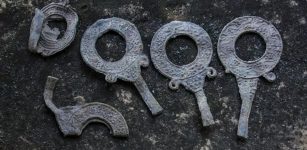 Five Ancient Mirror Frames, Ceramics Factory Found In Intriguing Roman Villa In Pavlikeni, Bulgaria
Archaeology | Mar 13, 2018
Five Ancient Mirror Frames, Ceramics Factory Found In Intriguing Roman Villa In Pavlikeni, Bulgaria
Archaeology | Mar 13, 2018 -
 Horses Skinfaxi And Hrimfaxi – Bringers Of Light And Darkness To Earth In Norse Mythology
Featured Stories | Dec 16, 2017
Horses Skinfaxi And Hrimfaxi – Bringers Of Light And Darkness To Earth In Norse Mythology
Featured Stories | Dec 16, 2017 -
 The Curse Of Chief Chocorua Who Died On The Mountain That Bears His Name
Featured Stories | Mar 9, 2019
The Curse Of Chief Chocorua Who Died On The Mountain That Bears His Name
Featured Stories | Mar 9, 2019 -
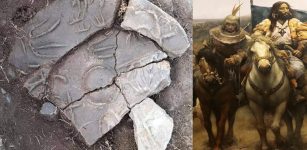 Lost Ancient Dragon City Of The Xiongnu Empire Discovered In Mongolia
Archaeology | Jul 22, 2020
Lost Ancient Dragon City Of The Xiongnu Empire Discovered In Mongolia
Archaeology | Jul 22, 2020 -
 The Real Paleo Diet: New Archaeological Evidence Changes What We Thought About How Ancient Humans Prepared Food
Featured Stories | Nov 28, 2022
The Real Paleo Diet: New Archaeological Evidence Changes What We Thought About How Ancient Humans Prepared Food
Featured Stories | Nov 28, 2022 -
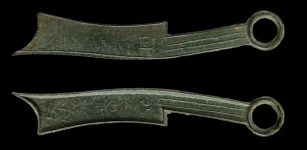 Scientists Decipher 2,300-Year-Old Chemistry Formulas Revealing Ancient Metallurgy Was More Complex Than Previosuly Thought
Ancient Technology | Aug 10, 2022
Scientists Decipher 2,300-Year-Old Chemistry Formulas Revealing Ancient Metallurgy Was More Complex Than Previosuly Thought
Ancient Technology | Aug 10, 2022 -
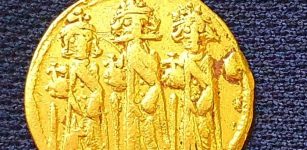 Rare Ancient Gold Coin Depicting Emperor Heraclius And Hill Of Golgotha Discovered In Israel
Archaeology | Aug 25, 2021
Rare Ancient Gold Coin Depicting Emperor Heraclius And Hill Of Golgotha Discovered In Israel
Archaeology | Aug 25, 2021 -
 Algonquin People And The Myth Of The Medicine Woman In The Moon
Featured Stories | Feb 1, 2016
Algonquin People And The Myth Of The Medicine Woman In The Moon
Featured Stories | Feb 1, 2016 -
 Ancient Mystery Of The Oghars – An Unusual And Little-Known Lost Race
Ancient Mysteries | Mar 19, 2019
Ancient Mystery Of The Oghars – An Unusual And Little-Known Lost Race
Ancient Mysteries | Mar 19, 2019 -
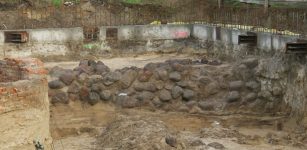 Massive Ancient Fortifications Reveal Poznan Was Poland’s First Capital
Archaeology | Jul 2, 2020
Massive Ancient Fortifications Reveal Poznan Was Poland’s First Capital
Archaeology | Jul 2, 2020 -
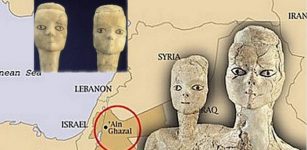 Stone Age Statues Were Taken To Britain For Restoration In 1990 – Never Returned Home To Jordan
News | Apr 6, 2021
Stone Age Statues Were Taken To Britain For Restoration In 1990 – Never Returned Home To Jordan
News | Apr 6, 2021 -
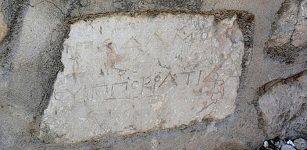 2,300-Year-Old Tablet Found In Mugla, Turkey – Region Of Great Historical Importance In Ancient Times
Archaeology | Jun 5, 2019
2,300-Year-Old Tablet Found In Mugla, Turkey – Region Of Great Historical Importance In Ancient Times
Archaeology | Jun 5, 2019 -
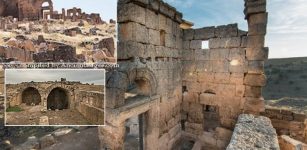 1,800-Year-Old Entrance To Turkey’s Zerzevan Castle Found Among The Ruins
Archaeology | Aug 15, 2020
1,800-Year-Old Entrance To Turkey’s Zerzevan Castle Found Among The Ruins
Archaeology | Aug 15, 2020 -
 Discovery Of Second Viking Site Point Rosee In North America Could Re-Write Ancient History
Archaeology | Apr 1, 2016
Discovery Of Second Viking Site Point Rosee In North America Could Re-Write Ancient History
Archaeology | Apr 1, 2016 -
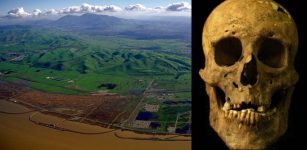 Discovery Of Unusual Ancient Skeleton Offers Evidence Giants Inhabited California
Archaeology | Mar 31, 2014
Discovery Of Unusual Ancient Skeleton Offers Evidence Giants Inhabited California
Archaeology | Mar 31, 2014 -
 Ancient Mystery From The Age Of Taurus And The Murdered Astronomer – Evidence In The Arctic ? – Part 2
Ancient Mysteries | Nov 1, 2019
Ancient Mystery From The Age Of Taurus And The Murdered Astronomer – Evidence In The Arctic ? – Part 2
Ancient Mysteries | Nov 1, 2019 -
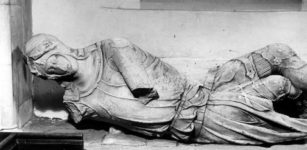 Aldworth Giants: Knights Who People Tried To Erase From History
Featured Stories | Jul 2, 2015
Aldworth Giants: Knights Who People Tried To Erase From History
Featured Stories | Jul 2, 2015 -
 Riddle Of The Old ‘Cursed’ Car – Supernatural Forces Or Unusual Coincidences?
Featured Stories | Dec 21, 2019
Riddle Of The Old ‘Cursed’ Car – Supernatural Forces Or Unusual Coincidences?
Featured Stories | Dec 21, 2019

